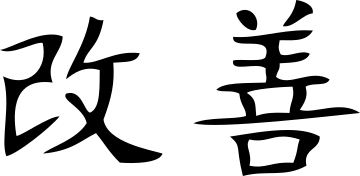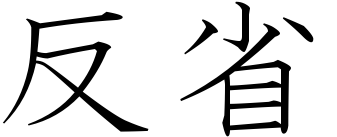If you look at John Danaher’s Instagram bio, you can readily see the word “kaizen”. He proclaims to be living in accordance to kaizen. After quickly looking at a dictionary, we discover that kaizen means betterment or improvement. This is a Japanese concept that is often employed in business settings as a philosophy of continuous improvement. Danaher himself describes this principle as improving through training even a tiny bit every day, so that in five years time you have a completely different game and a honed set of skills. The concept of kaizen is indeed interesting and deserves to be studied and applied to jiu jitsu training, but today let us talk about another concept that is related to kaizen so much so that kaizen is impossible without it.

This second important concept is “hansei”, which means reflection or introspection. Hansei can be described as a process of reflecting on past experiences, either successes or failures, to improve oneself in the future. Although this seems something abstract it is actually very practical. In order to apply it, one only need to list the mistake or problem one wants to analyze. After taking responsibility for the mistake, one should list the possible causes of the problem. Finally one should try to define alternative actions to avoid the same mistake in the future by analyzing the causes. The given description is a simple algorithmic procedure that can be applied to jiu jitsu training.

I do believe we have to research new ways and integrate new principles of training, be it in a practical way or as more of a paradigm. We probably can agree that a lot of the BJJ schools teach a technique a day and not much is said about chaining techniques, strategy, how to map your transitions beforehand, etc. This method is probably fine for a black belt that already knows all the basics, but for a beginner it seems like complete chaos for many months. It is true that this is changing nowadays mainly thanks to a systematic approach to jiu jitsu.
Having said that, how then do we apply hansei to jiu jitsu? My first guess is to observe what you did every day. Analyze every time you lost position, every time you were swept, every submission you attempted and failed, basically everything that went wrong in sparring. But we need not limit ourselves with the failures, we can do the same with the successful actions of a specific sparring session. Why not? Did I really had a good arm bar finish or was it my opponent that had poor defensive skills? Filming the sparring every day should probably be a good way to do it.
Now, how do we reflect upon it? We should strive to correct the observed mistakes in a systematic way. Doing specific training in a weak area would be an example. If you failed five back takes against opponents of supposedly lower skill level, maybe you should train back takes. As we start to implement these strategies we enter the domain of kaizen. Hansei facilitates and guides kaizen. The combination of relentless reflection and continuous improvement certainly will improve my jiu jitsu, and yours. These concepts are independent of skill level and everybody can benefit from them.
I will have more to say about kaizen and hansei.
Thanks for your blog, nice to read. Do not stop.